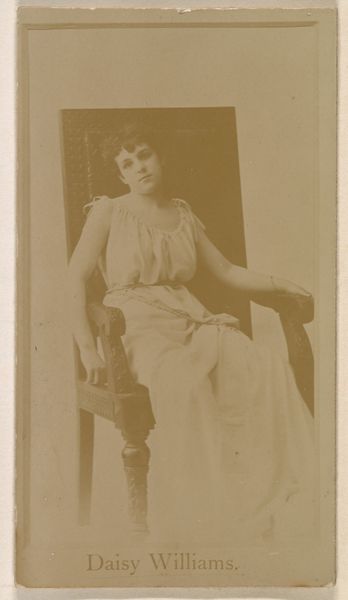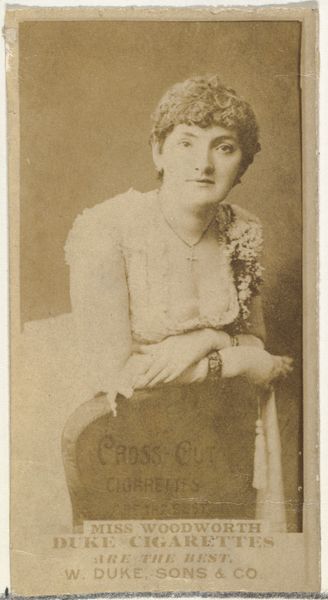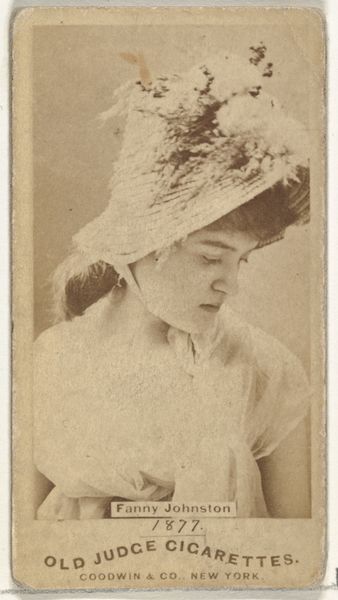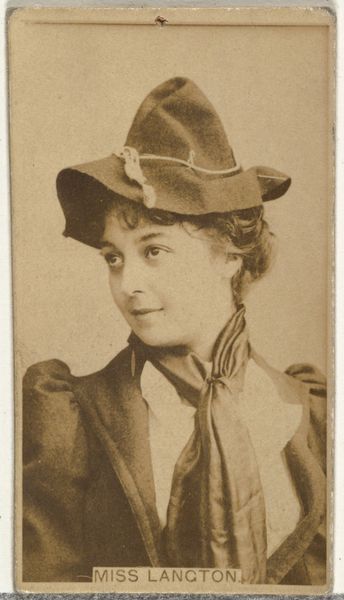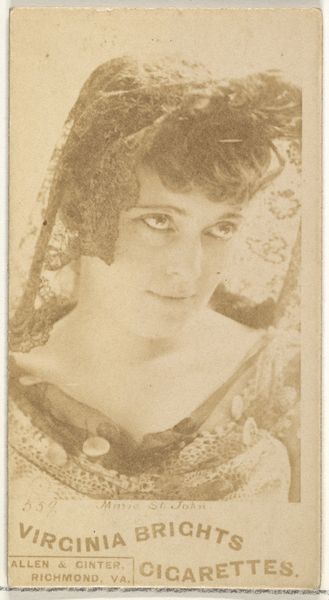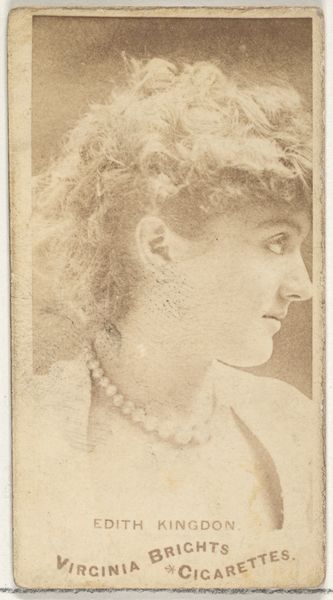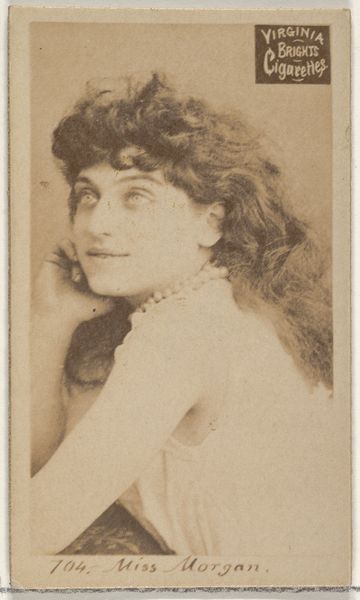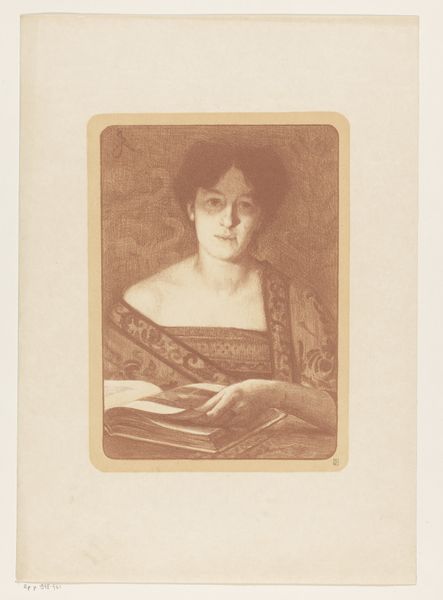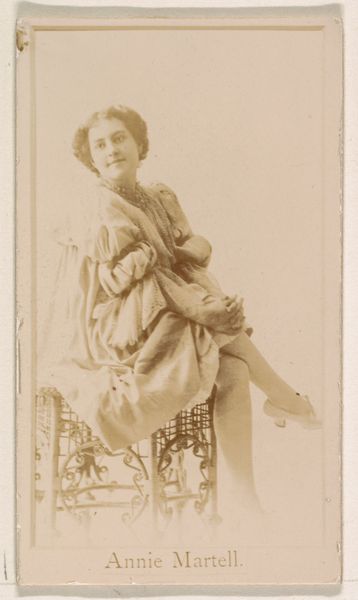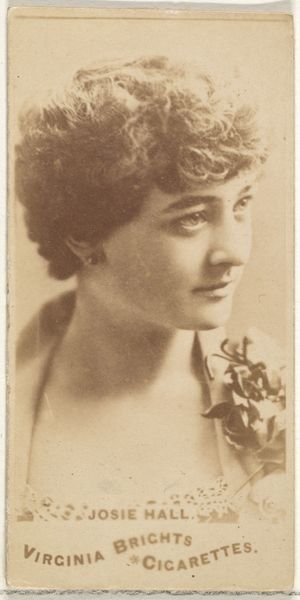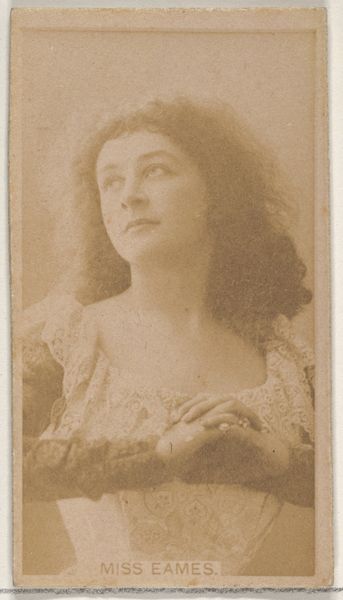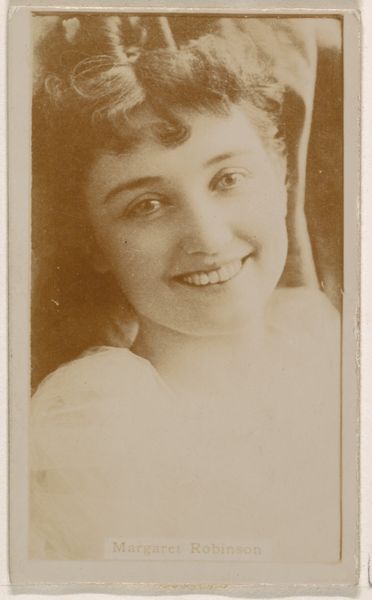
photography, gelatin-silver-print
#
portrait
#
pictorialism
#
photography
#
historical photography
#
gelatin-silver-print
#
modernism
Dimensions: image: 24.7 x 18.7 cm (9 3/4 x 7 3/8 in.) sheet: 25.5 x 20.2 cm (10 1/16 x 7 15/16 in.)
Copyright: National Gallery of Art: CC0 1.0
Curator: Here we have Alfred Stieglitz's "Katharine N. Rhoades," a gelatin-silver print from 1915. Editor: It’s ghostly, isn’t it? Like she's emerging from some half-lit memory. And the pose—a slight lean, almost a reluctance—speaks volumes. Curator: Pictorialism is quite evident in this work, focusing on soft focus and tonal range to evoke atmosphere rather than sharp detail. Note the delicate rendering of her dress, the diffuse light catching the fabric. Editor: It’s that haze that really gets me. It’s as if Stieglitz is interested less in capturing an exact likeness, and more in exploring some inner quality—her spirit, perhaps? And that single strand of earring! A delicate counterpoint to the simplicity of her garment. Curator: The composition also uses modernist ideas to flatten the depth. By leaning against the door frame she almost becomes a structural support. The details are further suppressed by the limited range of gray. Editor: Absolutely. The composition pulls you into her gaze, that open, searching look. I find it hard to believe she is aware she is being photographed here; it feels very unguarded. Curator: I would add that the print’s surface texture contributes to the overall effect. Stieglitz’s engagement with material further detaches us from the reality that one might expect from more contemporary, documentary approaches to portraiture. Editor: What a strange collaboration this photograph seems to represent: a photographer exploring inner truths, with his subject seemingly not playing the role. You’re right, a definite mood overtakes any notion of 'reality'. Curator: Precisely, a pivotal moment in portrait photography when formalism allows for a more personalized narrative to come to the fore. Editor: It leaves me pondering about both Stieglitz's methods and Katharine herself. And wanting to look more closely.
Comments
No comments
Be the first to comment and join the conversation on the ultimate creative platform.

